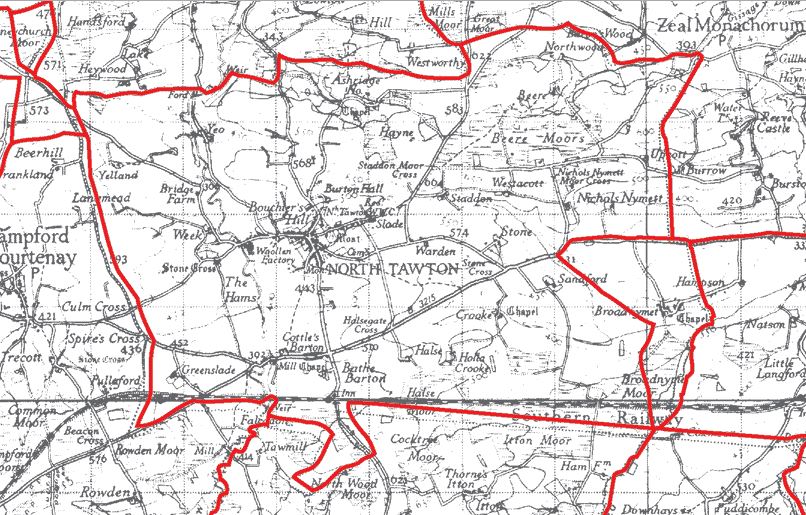Nemetestatio means “the Nemet Station” or “Fort” and appears in only one of the four main geographies; the Ravenna Cosmography of the seventh century.
There are three known copies of the Ravenna Cosmography in existence.
The Vatican Library holds a 14th-century copy and there is a 13th-century copy in Paris at the Bibliothèque Nationale, and the library at Basle University holds a 14th-century copy.
The Vatican copy was used as the source for the first publication of the manuscript in 1688 by Porcheron.
The German scholar Joseph Schnetz published the text in 1940, basing it on the Vatican and Paris editions, which he believed to be more reliable than the Basle edition.
The text lists the name Nemetotacio between the entries for the unidentified station Elconio, and Tamaris (Plymouth, Devon), at the mouth of the River Tamar. The entry was once attributed to the Nanstallon fort but is today tentatively identified with the fort at North Tawton.
The place-name is considered to be an amalgamation of the Celtic word Nemeton ‘sacred grove’ and the Latin word Stationis ‘road-station, outpost.’
The profusion of ancient sacred places in close proximity would seem to indicate that the first word of the ancient Roman name would have been plural in form, the entire place-name thus being translated as ‘The Road-Station of the Sacred Groves.’
Nemet or Nymet, means “the place of a shrine in a wood” and as such there are several ancient Nemets or Nymets in close proximity to North Tawton:
- Nicholls Nymet
- Broad Nymet
- Nymet Tracey
- Nymet Rowland
The Romans were equally superstitious with their Celtic enemies. Hence building the fort close-to or directly upon the site of an ancient druidic sanctuary – in the hope suppressing the local Celtic religion of Druidism.
The Roman road from Isca Dumnoniorum (Exeter) to Cornwall.
But the Roman came with a heavy hand, And bridged and roaded and ruled the land.
The River’s Tale, by Rudyard Kipling
The River Yeo, a tributary of the River Taw which flows from North Tawton south-east towards Exeter, was named the Nimet in ancient times.
In Roman times North Tawton was known as Tawelona (Tawland in the Domesday Book). Later, in 1270, it is called Chepin Tauton. The name Tawton means ‘farmstead on the silent water.’
The place name “Nymet” adapted from Nemet means “the place of the shrine in the wood”
Roman feet once marched in North Tawton.
Maps
There were only six places of settlement with habitation in dwellings on ancient maps of Roman Devon – Exeter, Seaton, Topsham, Stoke Gabriel, Mount Batten and North Tawton.
Related Articles:
